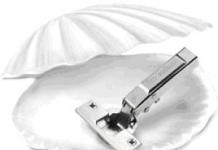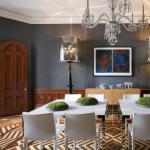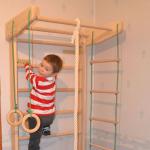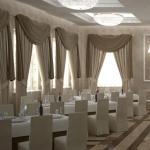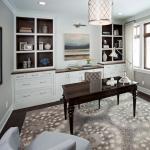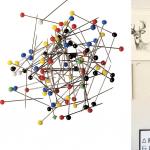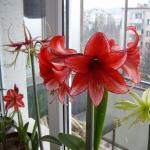Metal, if used in a residential interior, can significantly affect the atmosphere of the room in the future, making it cold and aggressive or, conversely, fanned by an aura of sophistication and taste. Both the first and the second option entirely depend on a sense of moderation, which must not be forgotten when working with a material such as metal.
If you are interested in this article, then most likely you are looking for answers to the question of how best to combine different metals in the space of one room.
Metal in the interior
Before using metal objects, it is necessary to soberly assess the size of the selected room. So, in a spacious bright room, a cold, in every sense, material can quite successfully coexist with other objects with a warm texture of fabrics and wood. But when it comes to a small room, you should not focus too much on metal objects, it will be enough to use a couple of decorative accents, for example, in the form of candlesticks or table lamps.
When it is planned to use objects from different types in the room metals, then they will get used to the image of the interior most harmoniously if it has:
- Tree
Furniture, decorative panels, flooring made of this material serve as a natural contrast to cold metals.
- warm shades
If you are a fan of metals and are ready to use them in the design of your home, the predominantly warm range of the room will contribute to a warmer image than the cold shades used in surface cladding.
- Light
A good solution, for example, is a beautiful forged cornice framing a wide window opening or an openwork copper chandelier, which, nevertheless, visually gives warmth.
Combination of dark and light metals
The contrast of colors in interior design is of great importance, because with its help you can create a more stylish and non-trivial image of the room.
Try pairing dark gray or black metal objects with light, lightweight ones such as iron and stainless steel or cast iron, steel and aluminum. By the way, in this way you can create compositional accents in one of the functional areas of the room, or use them only for the purpose of zoning the room.
Option 1: Compositional group of objects with elements of dark and light metals

Option 2: light metal items in one kitchen area, dark metal items in the dining room.

When choosing interior items and decor from different types of metals, you can try to create harmony using, for example, shiny surfaces in one room.
For example, the facades and cases of some items of large and small household appliances are made of titanium (a characteristic silver-white color), and if these are installed in your kitchen, various lighting fixtures or stainless steel utensils (silver color), as well as , beautiful pewter figurines (silver metal).

Iron ceiling panels can be combined in a similar way with steel-colored pendant lights and aluminum fittings.

Emphasis on copper
Very beautiful interior items or separate parts of some objects are produced from copper. This metal can look quite decorative and, at the same time, be successfully combined with other types, such as iron or silver. But combining them in one room, it should be remembered that it is better to focus on any one of them, in this case, on copper, taking other types of metals into the background.
In the center of the living room (near the fireplace, on its countertop) you can put beautiful copper vases, trays or candlesticks that will bring the atmosphere of antiquity. The kitchen, bedroom, corridor will be decorated with unusual patinated cases of chandeliers, sconces, or decorative table lamps. In addition to them, you can use items made of iron or silver, but always less abundantly and frankly (in the form of a coffee table base, cutlery, small figurines.

texture contrast
In the space of one room, several types of metals, processed differently, are sometimes successfully combined. You can combine smooth steel elements and iron corrugated and perforated surfaces in the interior. Also, it is considered a success to use matte painted, iron lamps or panels in the working area of the kitchen, combined with titanium, brass or steel objects.

Colored metals
Here we are talking not only about the simultaneous use of different (iron, copper, brass, steel or silver) metals in interior design. You can use only one specific type, but present it in different ways.
So, it would not be bad to install furniture with a black iron frame (a tea table, for example) in the center of a group of furniture, but if the living room has a fireplace portal, you can decorate it with a wrought iron grate with a touch of rust or patina.
 1
1
An interesting and very characteristic design of the wall around the fireplace, or a screen for placing a home theater monitor, can be realized using cladding with rolled sheets of copper, iron and brass. Try to repeat a similar experience, because we are sure that your guests have never seen anything like it.
In order to adapt iron objects to an interior designed in a specific, and not always aggressive style, we recommend using enamel paints. They do an excellent job of improving some of the characteristics of the metal: making it more resistant to corrosion, decorating it in terms of aesthetics.

Metal and its imitation
It is noteworthy that often, only one type of metal is used in the interior of one room, since not many people decide to combine it with the rest. Therefore, sometimes it is more expedient to use a good imitation of the material than to act recklessly at your own risk and combine several metals that are completely incompatible with each other.
Gilding, silvering, patination, potal are techniques used by masters of furniture art, creating carved headboards, frames for mirrors, and more.
One of these techniques can be used to create a decorative effect of gold on a ceramic vase, or to decorate a carved base of a wooden console.

Back in fashion and, it seems, forever! True, if earlier these metals were used only in palaces, now they are boldly added to modern interiors.
Both gold and silver are ideally combined with many textures and shades, so they are suitable for various styles - from baroque to hi-tech and even oriental. Gold or silver walls, accessories, details - all this will make your home stylish and sophisticated. The main thing is not to overdo it.
Choose a shade
Note that gold comes in different shades and it is better not to combine them in one interior. For the bedroom, light sandy-golden shades will be optimal, and bright gold will look too defiant, moreover, there will be little comfort in such a room. For the kitchen, it is better to choose darker shades. When designing a bathroom, make sure that the plumbing is the same shade as other gold or silver elements. Silver elements look best in sunny rooms, as they create a feeling of coolness. If the windows face north, designers advise using gold.
Kitchen
If earlier the kitchen was considered a place where everything should be simple and practical, today housewives most often start a tour of the premises from it. it is best to decorate with dishes with silver or gold elements, complement with handles on furniture. Be sure to pick up a beautiful chandelier. Let the kitchen be not only practical, but refined and stylish.
Walls

The metal surface has the ability to reflect light, which means that your home will become more spacious. The lightest option is Metallic wallpaper, which imitates the glow of metal. Gold or silver mosaic looks elegant and expensive. Sometimes designers advise interspersing gold particles into plaster, then they will shimmer slightly, shimmer in the dark.
Furniture

Today it is gaining great popularity with gilding. When choosing it, pay attention that the gilding is dull, and not bright yellow. The golden surface reflects light and therefore visually enlarges the space, fills it with light. Therefore, gold looks good in both small and spacious rooms. Modern designers are increasingly gilding not the wooden elements of sofas or armchairs, but the upholstery - textiles, leather.
Accessories

Gold or silver accessories are the safest option among others if you are afraid to overdo it and turn your home into a palace. Gilded picture frames, mirrors, candlesticks, gold embroidery on pillows or curtains - by combining them with other colors of walls and furniture, you can refresh the interior, add sophistication to it. In this case, it is best to combine accessories with solid colors - white, black, purple. It is easy to find silver/gold-plated sockets and switches in stores - they will also add mood.
If yours is already completed and it lacks only details, add framed photos - they are never superfluous: they not only decorate the room, but also remind you of wonderful moments and dear people. Let all the frames be gold or silver - then black and white photos will look perfect in them.
Previously, golden interiors were necessarily complemented by large golden chandeliers. Today they are much smaller, but interesting gold options are easy to find.
Combination of silver and gold

The combination of gold and silver is risky and requires delicate taste, so if you do not like to take risks, it is better to choose one of the metals. You can afford to experiment - go ahead! Combine gold and silver not only in one room, but also on one object: for example, a mirror in a large gold frame with silver splashes can set the mood for the whole room.
How to combine gold and silver with other colors?
Now the trend is the combination of gold with white. It is also good to combine gold with warm colors - brown (wooden furniture decorated with gold looks especially elegant), orange. If you choose chocolate from shades of brown, you will get the effect of comfort, a warm homely atmosphere - best suited for a bedroom or office.
The combination of gold and red is called royal, but by the way, it can turn out to be too aggressive for an apartment. The classic combination for lovers of luxury is gold with purple. The hall looks modern and at the same time prestigious, where gold is combined with black, dark gray or purple - this way you will create the perfect place for holding festive evenings. Gold with blue or turquoise will surprise your guests and give the room freshness. And it is better not to combine gold with green.
Silver looks elegant with white, gray, unexpectedly with turquoise. After all, there are no shades that silver cannot be combined with.
The main thing is to know the measure
Gold and silver in the interior require exquisite taste in order not to fall into a dangerous trap: if there are too many metals, if they do not harmonize with other elements, it may seem that you finally want to show your wealth and success. Therefore, when experimenting with gold or silver, find unexpected solutions, give free rein to ideas, the main thing is to remember the sense of proportion.
Gold and silver are really making a comeback, and this trend has appeared both in clothes and in the interior. Often designers use a mix of gold and silver and matte and glossy. This is especially noticeable in lighting, decoration, frames, baguettes are often used: where the decor is more saturated, gold and silver are often added there. It is always individual and depends on the style of the interior, where some new trends are allowed.
In classical styles, everything is quite conservative. In minimalism, gold and silver are used infrequently, but there are many of them in modern classics, art deco. Gold goes very well with white. It's a rich material, so it's perfect for a calmer background color. Small details can be combined with black, but if there is a lot of black, the room will look aggressive - such an interior is suitable for a club or restaurant, but not for a living space.
Trendy interiors: elegant living room in gold and silver
Fashionable interiors are often created using a combination of metals. The combination of silver and gold has always been valued, and even a small addition of copper can bring a whole new feel or just be a nice addition to a beautiful design.
Whether you're after a glamorous style or a touch of modernity, the tips below will help you paint your room in metallic tones.
Select main
When combining metals, as well as when mixing colors, it is best to choose one dominant shade and one secondary one in order to visually structure the room. In this case, many items are steel-colored, and only a few are gold-colored.

A successful combination of interior items of different colors
There is no mathematical formula showing the ideal ratio between different metals, but it is worth focusing on 70% of the main and 30% of the secondary shade. This will highlight the first and prevent the second from getting lost. In this room, this approach was chosen: a lot of gold-colored objects, diluted with silver.
It is worth noting that each tone appears in several places in the room, and not just in one. In a large space with many elements, this will unify the room and make it more interesting.
Use fabrics
When working with metallic hues, don't forget that the fabric can help you distribute them throughout the room.

Golden table and pillows - soft accents of the room
In this case, the golden yellow color creates an atmosphere of warmth and comfort, while not standing out too much.
It’s worth taking one large item (like this coffee table) in the main shade, and a few small ones that will spread it around the room. Using pillows is a good move, as you can always wear pillowcases of a different color over them.
Golden Rule
Any of the metallic colors can be dominant, but I recommend using more gold and less silver. Silver hues tend to be brighter, so they will look better if there are fewer of them, highlighting the interior without overwhelming it.

Combination of silver and gold
In this design, the legs of the chair and the silver frame of the mirror are successful accents, but leave the main role behind.
Don't be afraid to experiment!
It is quite possible to combine more than two shades in one room, but it depends on its size. Add small flashes of silver, gold and copper to a wide space and you will enliven the room without cluttering it.
In this living room, each metal is present in almost equal proportions, but in general they do not dominate the palette.

Important but not the main design elements
In a small room (less than 45 square meters), two metallic tones are the best choice, otherwise it will look like an overloaded antique shop.
The magic of inconsistency
Sometimes the most elegant solution will be a combination of incongruous elements.
In this enchanting bedroom, the chair, nightstand and other accessories are crafted from a variety of metals ranging from cool silver to pale gold. In addition, some items are polished to a shine, while others have a more shabby, antique look, but each of them becomes a separate part of a single eclectic story.

Unity of opposites
It is also important that the rest of the room has neutral white and gray shades, which brings a sense of calm.
Cuisine: Divide and Conquer
Two of the easiest ways to combine metals in the kitchen is to divide items into functional and decorative, each group in a different color.

Elegant silver and flashy copper
For example, here the faucet and handles on the cabinet doors are almost the same shade of dark silver, and the lamps are a noticeable bright copper. This creates an additional focus on the fixtures.

Gold is a warm element of steel design
A similar approach is used here: the table top, chair and doors are made in cold steel tones, against which gold lamps immediately stand out.
Pendant lights aren't the only way to make your room sparkle. In this personalized kitchen, few items have a steel hue, while the main metals used are bronze and copper.

Chic gold accessories
Steel surfaces are a chic solution for kitchen design. They can be combined with anything, so you can use other tones in any proportion.
Bathroom: divide and conquer
This strategy also works well in bathrooms. Choose one tone for the faucet and shower (preferably from the same manufacturer) and another tone for handles, lamps and mirrors. For example, polished silver and brushed gold are elegantly combined here.

Worn gold creates an antique feel
In a small bathroom, you should stick to neutral colors so as not to overload the room. In this case, the silver wallpaper combined with the gray marble and the steel tones of the fixtures and faucet successfully set off the chic golden mirror. Any other colors would draw attention to themselves.

Bold bathroom solution
Close shades
In a room where attention is not focused on metals, two similar shades will work well. At the same time, the design will be less contrasting, and the fullness of the palette will not be revealed immediately, but only after careful study - as in this bathroom.

Stunning elegance
However, this is not always the easiest solution, and if you are in doubt about whether the end result will look good, stick to one metallic color.
Mix of metals and paints
For those who lack bright colors, a combination of metal with shades of blue is suitable. It is the closest color to a neutral and goes well with gold, silver or copper. It will add spice to any design.

Blue sets off metallic tones
Modern design tends to be eclectic, mixing styles and materials. Jewelers often use several metals in their work at once, and interior designers have adopted this technique. The combination of copper, silver and gold can instantly transform the interior, visually add depth and volume to it. We propose to discuss how to properly combine objects made or decorated for different metals in the interior.
Assess your options
First of all, it is important to evaluate the possibilities of your premises, since the rich texture of the metal will certainly make its own adjustments to the visual perception of the room. A large room is a great opportunity, especially if the lighting system is properly organized here. Cold energy metal will get along well with other materials and textures.
If we are talking about a room with a small area, metal objects can also be used, but it is worth limiting their number to two or three.
It should be borne in mind that several different types of metal will fit better into the interior, in the design of which a warm color palette and wooden elements are used. With their help, you can neutralize the excessive cold of the metal.
Play with contrasts
Playing with contrasts is one of the most relevant techniques in modern interior design. The collision of materials opposite in color, character and texture always gives a very interesting effect. In this context, we can talk about the excellent compatibility of such metals as iron and cast iron with stainless steel and aluminum: the first group, as a rule, is black-gray in color and has a heavier texture, while steel and aluminum are lighter, the surface has a silvery, slightly glossy. You can use such a contrasting combination of metals not only for a decorative purpose, but also for a functional one, for example, for zoning a space.
Give preference to relatives
The opposite trend also works - the use of materials similar in color and texture. So, in one interior, items and finishes in silver-white color, that is, made of titanium, tin, stainless steel and aluminum, will harmoniously look. A warmer combination in nature is gold, brass and bronze.
Pick a favorite
Selecting everything means not highlighting anything, so you need to choose a metal (or its imitation) that will dominate in a particular interior. Other materials and colors should be used in smaller quantities so as not to shift the focus.
The use of gold-colored finishes has been a current trend for several seasons. Gold in a modern interior is harmoniously combined with chocolate shades and geometric patterns of muted, restrained colors. When choosing items and finishes decorated in gold, it is worth remembering the measure, otherwise the interior will turn out to be too pompous, pretentious.
Copper is gradually losing ground, but this does not stop many customers and designers. This metal has a warm, pleasant color that can transform any decor. A pastel color palette would be the perfect complement to copper to bring out the warmth of this metal. Experimenting with brighter and more saturated colors, such as black, green and blue, can also give interesting results. The combination of copper with wood texture also looks beautiful.
If we talk about how “friendly” copper is to other metals, it is worth noting that it “gets along” well with iron and silver, but they need to be used in smaller quantities so as not to shift the focus.
Silver
Silver goes well with other metals close to it in color: chrome, nickel, stainless steel, titanium, etc. Against the background of these materials, silver will stand out due to the noble brilliance. It is worth being careful about the combination of silver and black, as it makes a rather gloomy impression.
Brass elements can transform the interior in no time. This metal is one of those that look organically in the interior in eco and Scandinavian styles. Brass goes well with the natural color palette and the abundance of wood.
Chrome and steel
Chrome and steel are similar in color and work well together. In addition, these metals will come in handy when decorating interiors with brick, stone, leather and marble finishes.
Metals are unlikely to cease to be used for interior decoration in the near future, only the fashion for specific types is changing. Do not be afraid to experiment and combine materials with different textures in one interior. So the design will look livelier and more interesting.
The use of metals in the interior allows you to create an interesting play of colors and textures, while clear lines and shine enliven the design of the room, give it status and style.
Most often, metal is found in minimalist or high-tech interiors. This is due to the fact that this material is associated with some coldness and austerity, which gives the room the stability and rationality inherent in these styles.
Metal is combined with almost all textures, subject to the measure of its use.
Gold
In modern interiors, gold is combined with basic colors (blue, red, yellow), but there are also combinations with softer tones (blue, cream). In classic interiors, gold is adjacent to black and white, which perfectly emphasize the texture of the metal, allowing it to be the main one in the interior.
Silver

Silver is a rare metal that should not coexist with contrasting colors and stand out among them. It fits perfectly into the interior, consisting of colors close to it: gray, blue, smoky, but still dominates due to texture and brilliance. Fans of interesting combinations can add bright colors to silver in the company: green or lemon. It is better not to combine silver with black - you get a gloomy interior, in extreme cases, accurate dosing of both colors is acceptable.
Copper

Copper harmoniously looks with woody textures, but modern designers are experimenting and combining this metal with pastel shades: pink, lavender, light gray. To add zest to the interior, copper is often included in black, bright blue or green interiors.
Iron

Iron is a natural metal, and therefore it is better to combine it with wood of different colors, which will emphasize its naturalness. Additionally, you can use dark blue, dark yellow and green tones.
Brass

Brass details look great in the interior of natural tones - green, white, gray, blue. It is best if the furniture in the room is bright colors, and the decoration is muted.
Chrome and steel

These metals are similar in color and are combined only with natural gray shades. They will look especially impressive with stone, leather or marble.
Metals fit harmoniously into the interior of any room, but modern design trends show that metals look especially luxurious and harmonious in the kitchen: they look stylish and do not require much time to clean. Metal can decorate furniture or facade. The most popular material is stainless steel, but always polished or chrome-plated. The glossy effect expands the space and gives the room a feeling of cleanliness and comfort.
